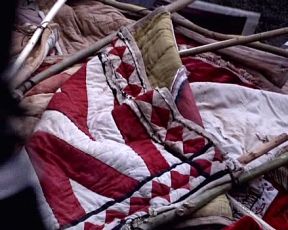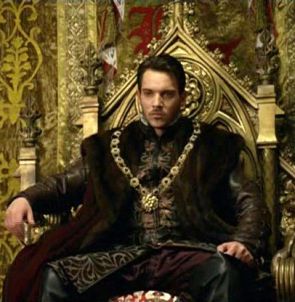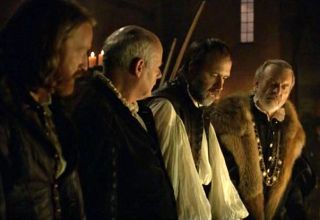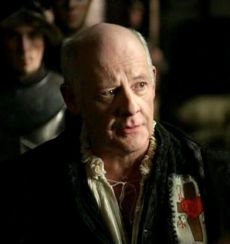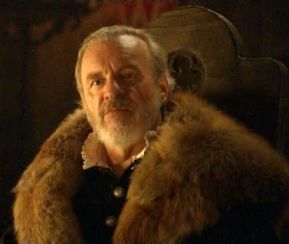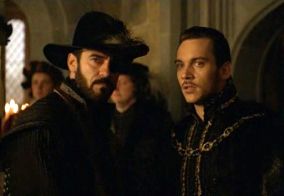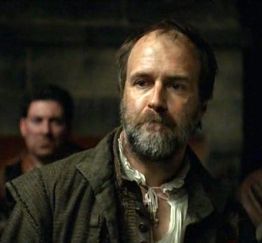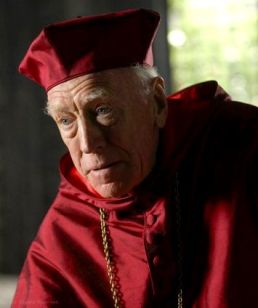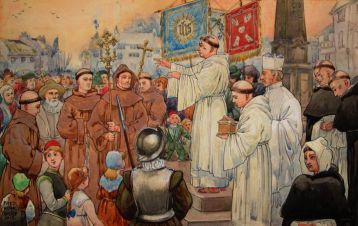REBELLION on the Tudors
Jump to navigation
Jump to search
| Steps that led to the Rebellion |
| The process began with Henry's strategy to separate the English church from the larger Catholic church so that the divorce could be tried within England without any right of appeal to a higher authority & culminated with the Dissolution of the Monasteries. See the Timeline of events that led to the Rebellion |
Click here for a good overview : <a class="external" href="http://www.youtube.com/watch?v=fAE3jnuvCm4" rel="nofollow" target="_blank" title="Henry VIII and the Pilgrimage of the Grace by David Starkey">Henry VIII and the Pilgrimage of the Grace by David Starkey</a> |
| Reasons for the Dissolution of the Monasteries | Reasons for the Rebellion |
| 1. The monks were the main supporters of the Papal authority in England, and they were members of orders which were spread over Europe. It had proved possible to separate the English bishops and clergy from allegiance to the Pope; this was not possible with the monastic orders, which were international, not insular, institutions. 2. The wealth of the monasteries, which was the result of the pious bequest of many centuries. The cry against monastic wealth had been raised many times previously in English history. The courtiers of King Henry VIII and the rising middle class were greedy for land, and Henry saw that by ministering to their greed he could make his new nobility and their new property a firm support of his Reformation. 3. The third reason for ending the monasteries was the reason given to Parliament: that the monks had outlived their day of usefulness and were abandoned to idleness and vice. There were over 600 religious houses in England, and no doubt there was some truth in this charge. Zealous churchmen had long known that all was not well with these ancient institutions. In Henry VII's reign the Oxford Reformers had rebuked monkish follies & the 'incurable uselessness' of many of the smaller houses where the monks were idle and ignorant. | Exactly how many were opposed to *the royal supremacy cannot be ascertained since speaking against it was an act of treason. However, it went deeper than just accepting the changes, there was a feeling that the king's council should be a body which reflected the broader opinions of the nation & it should be wise but also consensual. The conviction was strong that the normal processes by which a king took counsel had broken down & that the king had pursued a divorce which was misguided particularly by a select "kitchen cabinet" of intimates such as Thomas Cromwell & Thomas Cranmer. To many it seemed that the king was under the dominance of a sectarian clique who manipulated him to their own self-interest. Counsel had failed. Robert Aske criticized the nobility for not having done its duty by advising the king against the dissolution. |
| The King & his Royalist Men | The Rebels: Monks & Pilgrims |
| The King was infuriated with the criticism of the rebels: "Concerning choosing of councillors, I have never read, heard, nor known that princes' councillors and prelates should be appointed by rude and ignorant common people; nor that they were persons meet , or of ability to discern and choose meet and sufficient councillors for a prince. How presumptuous then are ye.... to find fault with your prince, for electing of his councillors and prelates; and to take upon you, contrary to God's law and man's law, to rule your prince". * see video clip of <a class="external" href="http://www.youtube.com/watch?v=mKlQgKM9w3A" rel="nofollow" target="_blank" title="David Starkey's "Mind of a Tyrant"">David Starkey's "Mind of a Tyrant"</a> | The Lincolnshire rebels submitted that "we your true subjects think that your grace takes of your counsel and being about you such persons as be of low birth and small reputation"... The demand that the king should choose new councillors was not included in the Pontefract articles. it was perhaps too inflammatory. The Pilgrims contented themselves by demanding "condign punishment" for Cromwell, Audeley & Sir Richard Rich "as subvertors of the good laws of this realm and the maintenance of the false sect of heretics and the first inventors and bringers of the same". Robert Aske declared : In all parts of the realm men's hearts much grudged with the suppression of abbeys, and the first fruits, by reason the same would be the destruction of the whole religion in England. And their especial great grudge is against the lord Cromwell. |
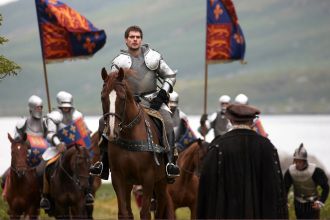 During the 1st Lincolnshire uprising , the Great North Road at Stamford was blocked by a large force of armed men that stopped anyone coming up from London. The only substantial Lincolnshire landowner that the King could depend on was his friend and brother-in-law, Charles Brandon, 1st Duke of Suffolk who arrived at Stamford with a large, equipped army of 5,000 men. The rebellion lacking positive leadership and cause simply dispersed. | a pious lawyer with a following of 35,000 yeomen and monks, seized York and then marched south under a banner depicting the five wounds of Christ. No blood was shed & only one person was killed in the protest. The Pilgrimage was not a full scale rebellion, although it had the potential to be one due to its massive size. The government were forced to listen to their demands. However, the Duke of Norfolk, the king's negotiator, admitted that he had no intention of keeping any promises at all. Aske and the rebel leaders returned from London after a month, believing that they had won. The next year Henry took his revenge and the ringleaders of the rebels were rounded up and arrested. Aske was executed on 12 July 1537, and 178 others were also killed. |
Thomas Cromwell, Earl of Essex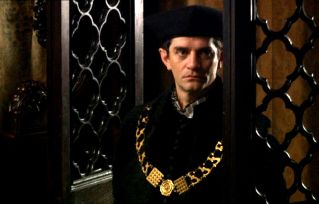 | |
Lord Shrewsbury  | Cardinal Reginald Pole 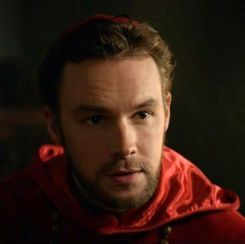 The Pope had given legatine powers to Reginald Pole, son of the Lady Salisbury of the Plantagenet line, and sent him to Flanders to wait the opportune moment to cross to England and lead the rising. |
Sir Francis Bryan | Sir John Constable |
Thomas Howard, 3rd Duke of Norfolk *Was very involved in putting down the uprising but not shown in the series as such and his part has been amalgamated with Charles Brandon. After the uprising was quashed by virtue of King Henry VIII's betrayal of his promise of a general pardon, he wrote to Thomas Howard, 3rd Duke of Norfolk, his agent: Our pleasure is that . . . you shall cause such dreadful execution to be done upon a good number of the inhabitants of every town, village, and hamlet that have offended, as they may be a fearful spectacle to all others hereafter that would practice any like matter. |
| The Rebellion as portrayed on The Tudors |
<embed base="http://admin.brightcove.com" flashvars="videoId=16946210001&playerId=271552642&viewerSecureGatewayURL=https://console.brightcove.com/services/amfgateway&servicesURL=http://services.brightcove.com/services&cdnURL=http://admin.brightcove.com&domain=embed&autoStart=false&" height="453" src="http://widget.wetpaintserv.us/wiki/thetudorswiki/widget/unknown/c6fab36d160b6354cfe93ce2495a3c5632e45f6d" type="application/x-shockwave-flash" width="534" wmode="transparent"/> Scene from Season 3 Episode 1 |
| | |
| | |
| | |
| |
| In History |
| There were 3 separate but related uprisings in the north: The Lincolnshire Rising 1st - 11th October 1536 Began at St. James Church, Louth in Lincolnshire, after evensong & shortly following the closure of Louth Abbey, and quickly gained support in other nearby towns. With support from local gentry, the rebels marched on Lincoln and by October 6 had occupied Lincoln Cathedral, demanding the freedom to continue as practising Catholics and protection for the treasures of Lincolnshire Churches. The rebellion effectively ended when King Henry sent word for the occupiers to disperse or face the forces of the Duke of Suffolk, which had already been mobilised. Following the Rising, Thomas Kendall, the vicar of Louth and its spiritual leader, was captured and executed, as were most of the other local ringleaders over the next twelve months. However, Lincolnshire Rising would inspire shortly the more widespread Pilgrimage of the Grace. The Pilgrimage of Grace 8th Oct - 8th December 1536 Led by Robert Aske, its stated aim was to halt the "spreading of heretics, suppression of houses of religion and other matters touching the commonwealth". The movement broke out, immediately following the failure of the Lincolnshire Rising. Aske from a Yorkshire family, and a band of 9,000 followers entered and occupied York. There he arranged for the expelled monks and nuns to return to their houses; the king's tenants were driven out and Catholic observance resumed. The success of the rising was so great that the royal leaders, the Duke of Norfolk and Earl of Shrewsbury, opened negotiations with the insurgents at Doncaster, where Aske had assembled between thirty and 40,000. King Henry VIII authorised Thomas Howard, 3rd Duke of Norfolk to promise a general pardon and a Parliament to be held at York within a year. Aske then dismissed his followers, trusting in the king's promises. Sir Francis Bigod's revolt & the Cumberland Rising 16th January - 10th February 1537 The promises to the rebels were not kept, and a new rising took place in Cumberland and Westmoreland (which Aske attempted to prevent), and was spreading to Yorkshire. Upon this, the king arrested Aske and several of the other leaders, who were all convicted of treason and executed. The loss of the leaders enabled the Duke of Norfolk to quell the rising, and martial law was imposed upon the rebellious regions, ending the Rebellion |
LINKS:
|
LITERATURE:
|
